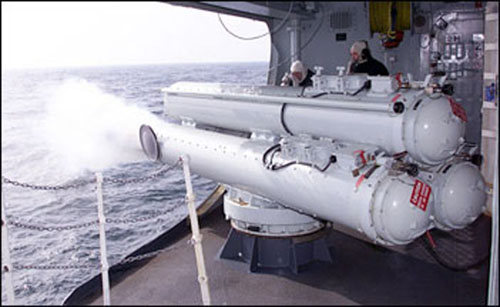
Destroyers - Tech Data
Revitalised Ships for Expanding Roles
In the aftermath of the Falklands War (where British warships were sunk by bombs dropped from aircraft and sea-skimming missiles) and the War in the Persian Gulf where the allied coalition fleet came under attack from Chinese-made Silkworm surface-to-surface missiles, addressing the problem of air defence became a top priority for western navies. With building cycles for brand new ships measured in years and decades, and limited by severe budgetary restrictions, the Canadian navy decided to convert the four 280s to the area air defence role. This gave them the self-defensive capabilities they needed to become command and control ships. Thus equipped, the navy could form independent task groups, responsible for their own security.
Improved Air Defence
As well as substantial changes to the superstructure of the vessels, new air-defence weapons were installed including Standard vertically-launched missiles and a 76mm Super Rapid gun. The 20mm Phalanx close-in weapons system provides a final defence against sea-skimming missiles. The ships' anti-submarine warfare weapons — two torpedo-carrying helicopters plus ship-launched torpedoes — were retained, as were their sophisticated, Canadian-designed towed array and hull-mounted sonars. The 280 Class also has a variety of electronic jamming and decoy devices and an infra-red suppression system fitted to their new single funnel.
The Specs
Type: Guided Missile Area Air Defence Destroyer
Displacement: 5,100 tonnes (full load)
Length: 129.8 metres
Beam: 15.2 metres
Draught: 4.7 metres (keel)
Engines: Twin shaft COGOG: Main: 2 Pratt & Whitney FT4-A2 main gas turbines producing 50,000 shaft horsepower; Cruise: 2 Allison, 570-KF cruise gas turbines producing appropriately 7,500 shp.
- Date modified:



















